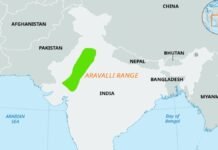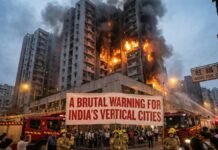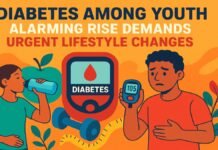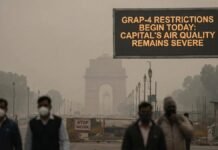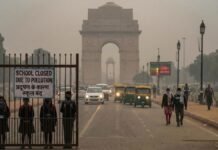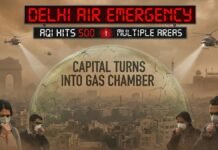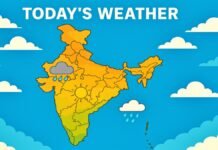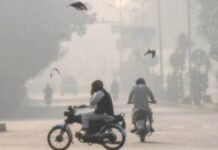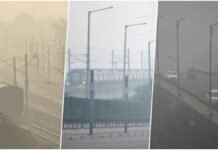
New Delhi: Despite strict Supreme Court and government orders, Diwali night saw widespread fireworks across Delhi, Noida, Ghaziabad, and Gurugram, as well as cities like Mumbai, pushing air quality to dangerous levels. The Air Quality Index (AQI) soared beyond 900 in several areas overnight, creating a suffocating environment for residents, with conditions persisting into the morning.
Record Pollution Levels Lead to Health Crisis in the Capital
In Delhi, AQI levels exceeded 350 in many neighborhoods, classified as “very severe,” leaving residents gasping for fresh air. Breathing difficulties and eye irritation were reported widely, especially among the elderly, children, and those with respiratory conditions. By dawn, a thick blanket of smog hung over the city, marking one of the worst Diwali pollution episodes in recent years.
The Delhi government had imposed a comprehensive ban on the production, sale, storage, and use of firecrackers from October 14, which remains effective until January 1, 2025. However, enforcement fell short as sporadic fireworks continued well into the night, leaving the air quality in a hazardous state. Data suggests that this year’s post-Diwali pollution levels in Delhi may be the highest in three years.
Restrictions in Other States Fail to Curb Pollution
Delhi wasn’t alone in implementing firecracker bans. States such as Bihar (covering Patna, Gaya, Muzaffarpur, and Hajipur), Maharashtra, and West Bengal also imposed restrictions, though some permitted the use of “green” firecrackers. In Punjab and Haryana, governments limited firecracker use to specific hours on major festivals, including Diwali, Christmas, and New Year’s Eve. Despite these measures, illegal sale and usage of firecrackers persisted, contributing to alarming AQI levels in multiple states.
What Does AQI Mean for Air Quality?
AQI ratings classify air quality on a scale from 0 to 500:
- Good (0-50): Minimal risk, clean air.
- Satisfactory (51-100): Air quality is acceptable, moderate health risk.
- Moderate (101-200): Higher risk for vulnerable individuals.
- Poor (201-300): Adverse effects on sensitive groups.
- Very Poor (301-400): Health warnings of emergency conditions.
- Severe (401-500+): Serious health risks for all residents.

With barely any wind to disperse pollutants this year, pollution has become a pressing concern, leaving the air stagnant and heavily laden with harmful particles. For Delhi and other regions affected, this year’s Diwali celebrations have underscored the need for stricter enforcement and effective alternatives to manage post-festival pollution.













